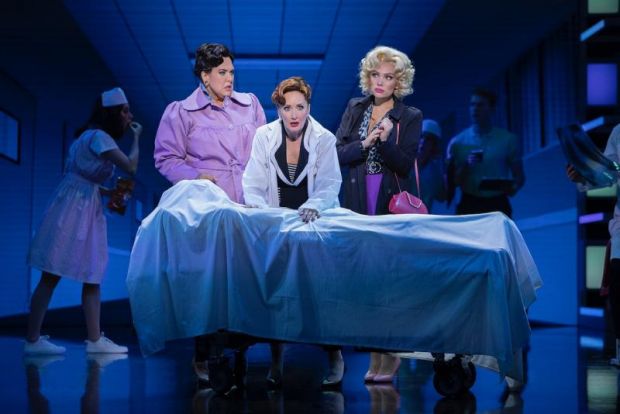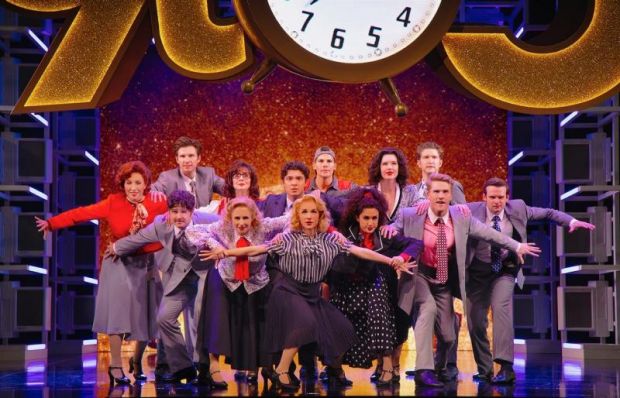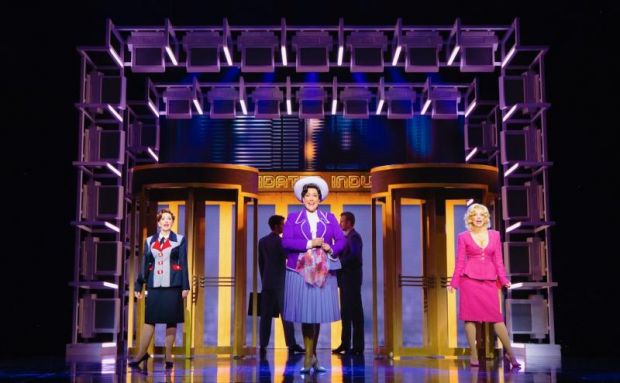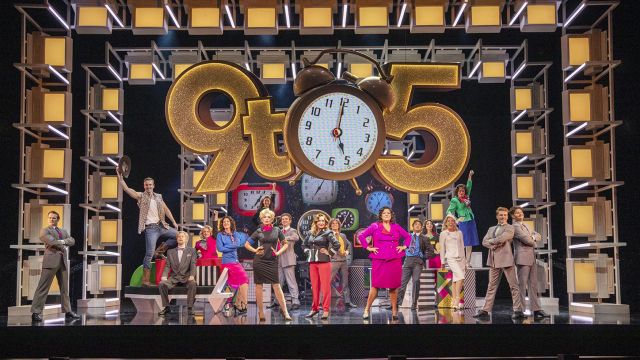9 To 5 The Musical
This is an unapologetically bold and brash story about three women employed in an office who take revenge – accidentally, at first – on the narcissistic misogynist that is their boss. Based on the 1980 movie of the same name, the supposedly feminist outcomes come too late and too light to have any real meaning, drowned in the dazzle of lights, costume, and the music of Dolly Parton.
Marina Prior is Violet, the long-suffering office senior overlooked for promotion too many times. Her ever-present strength is the glue holding the story together, balancing the other two lead roles: Erin Clare’s Doralee (her big blonde hair and southern sass leaves no room for discussion on who she is supposed to be); and Casey Donovan’s naïve Judy, new to the workforce after her husband ran off with his younger secretary. These three work very well together, in both drama and song, Prior creating initial tension between her and Clare, before it’s released all too quickly as the set-up ends and the real story begins. On this occasion, Prior’s vocals were outshone by Donovan, whose second act rendition of ‘Get Out and Stay Out’ deservedly brought the audience to its feet. Her range from quiet as a mouse to diva chorus was breathtaking.

Eddie Perfect is the disgusting CEO, Franklin Hart, Jr, and he milks shockingly sexist jokes and 1970s management behaviour without 21st century irony. The always excellent Caroline O’Connor shines in her pantomime role of Roz, Hart’s personal assistant, demonstrating her triple threat abilities in her lusty song ‘Heart to Hart’, but the narrative doesn’t allow her otherwise two-dimensional character to have much depth.
The ensemble is superb, tight in their choreography and voice, yet not entirely uniform. Some show different aspects of their character, particularly through the permanent drunkenness of Sarah Krndija’s Margaret, but no-one steals a scene from the main characters.

Originally set in the previous decade, Tom Rogers’ set and costume design is perfect eighties: bold colours and geometric design; and the period hairstyles are painfully familiar. Howard Hudson’s lighting is stark-white and overbright in the office scenes, but is much warmer for the solos, and the rectangular arches of computer monitors reinforce the primary colour palette (except for the hospital scene, where the pale greens are sublime). Nina Dunn’s video design is equally bright, defining the setting and time of day - and moving slickly between them, working with the lights, rather than fighting against them, as is often the case with projection.
Given this is the last stop on the Australian tour, it was disappointing for the opening title and most recognisable song to miss its mark, with singers and musicians unsynchronised and unbalanced – the audio mix favoured the excellent orchestra over the solo singers. Set changes too were nervous, rolling stage furniture stuttering off a beat or two too early. It was noticeably tighter in the second act.

If you’re after an examination of the history of gender-politics in the corporate world, this isn’t the show for you, but if you can disengage your brain from this century and enjoy the spectacle and music, you will have a great night out.
Mark Wickett
Photographer: David Hooley

Subscribe to our E-Newsletter, buy our latest print edition or find a Performing Arts book at Book Nook.

